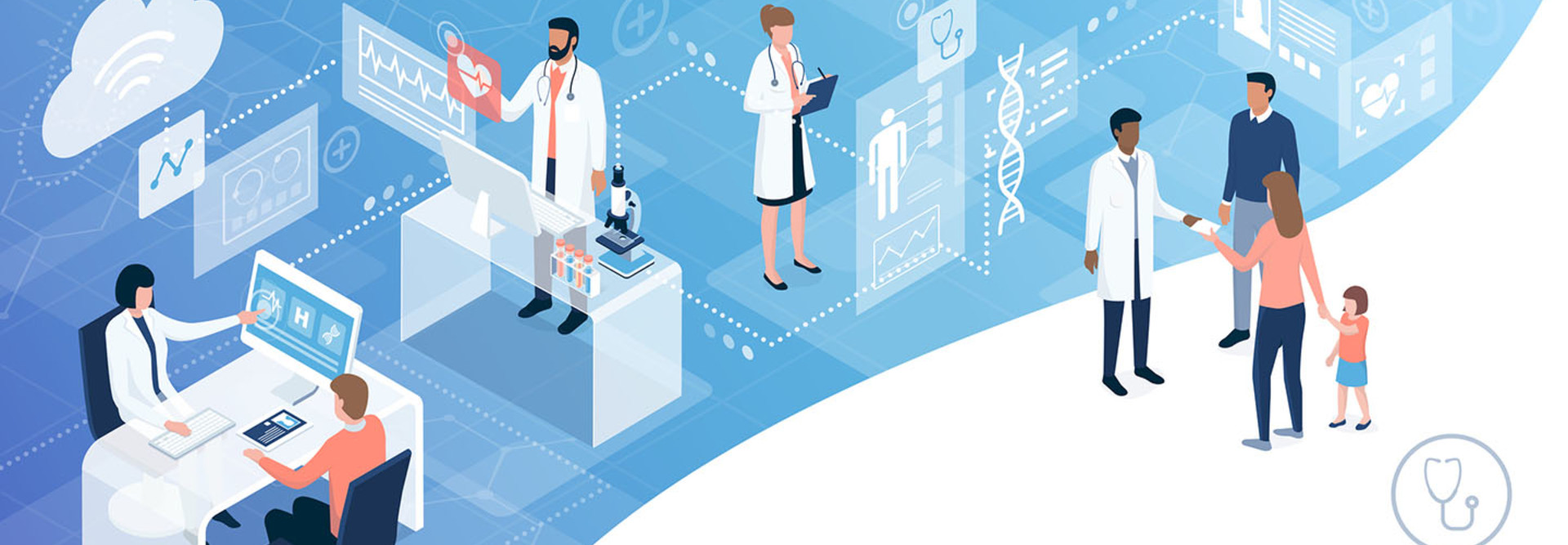When he invented the telephone, Alexander Graham Bell’s first words to his assistant were: “Come here, Mr. Watson, I must see you.” Legend has it that the reason Bell called his assistant over was because the inventor had spilled acid on his pants and required medical attention; if so, it’s one of the first known examples of telehealth.
Most people became aware of telehealth in the 1980s. Since then, telehealth has grown to encompass a wide range of devices and technologies that can transmit medical information in real time around the globe, allowing medical professionals to provide services to communities previously underserved. Further, it’s being used more often for both public and private health providers alike, including for the treatment of mental illnesses such as depression, saving lives in an emergency, and improving long-term health outcomes after a stroke.
MORE FROM HEALTHTECH: Meet patient demands with effective telemedicine programs.
1. Telehealth Brings Expertise to All Areas
The use of medical devices to monitor a patient's health from afar introduces a new level of convenience for both patient and provider. It can serve to supplement in-person visits to a medical practitioner, and complements regular doctor visits, creating a more comprehensive treatment plan. In addition, it can provide additional care that would otherwise be unavailable.
For example, communities without a dedicated stroke team may not know how to manage someone in the midst of a stroke. With telehealth, they can virtually consult with someone who can evaluate the patient and make sure they receive the right course of treatment at the right time.
This won’t eliminate visits to the doctor’s office entirely. Instead, telehealth and physical appointments will work in tandem with each other. The practitioner who reviews and monitors the patient should know whether they are meeting the minimum standards they would need to properly care for a patient, including in-person visits. If not, the practitioner won’t have enough data to support their medical management.
VIDEO: Telehealth takes care closer to the patient.
2. Telehealth Assists People with Limited Access to Specialized Care
The biggest benefit of telehealth is the ability to provide immediate access to care that otherwise would be difficult to obtain. Rural communities, for example, lack the healthcare infrastructure of more densely populated areas. Often, rural patients need to drive hours to see a practitioner, which isn’t always practical or possible. Telehealth creates an alternative way for patients and practitioners to remain in contact between appointments or for patients to have visits with specialists that they would ordinarily not be able to have.
In addition, communities cut off by tornadoes, hurricanes, and other natural disasters can leverage telehealth for additional critical care access. In recent disasters, trauma doctors, neurologists and other specialty providers have been able to Skype in to consult with people on the ground in the disaster area. This allowed them to provide specialized services where they wouldn't have otherwise been able to get them and saves lives that could have been lost.
MORE FROM HEALTHTECH: Remote patient monitoring makes real-time care a reality.
3. Telehealth Is Practical and Relatively Inexpensive for Patients
There is a declining misconception that, because it represents advanced technology, telehealth is also prohibitively expensive. In the past, providers were rarely reimbursed for telehealth services, so those services struggled to gain traction. While this has historically been a barrier in telehealth, it’s rapidly changing for the better. More health insurance companies, along with Medicaid and Medicare, are reimbursing the use of telehealth. As a result, patients are viewing it as a more viable, trustworthy system.
In addition, wearable devices like Fitbits and Apple Watches, which are in the telehealth category, can be purchased by the general consumer for several hundred dollars or less. Those devices can also be useful for many reasons, from patients attempting to lose unwanted weight, to monitoring chronic health conditions, which ultimately reduces future patient costs.
4. Telehealth Maximizes Access to Mental Health Care
One area benefiting most from the use of telehealth is mental health care. Monitoring visits for common mental health struggles, such as depression or anxiety, utilize little hands-on physical assessment and have more to do with speaking with the patient.
By taking advantage of telehealth via video communication, patients are able to get a quick 10-minute consultation, alleviate an immediate issue that maybe would have spiraled into something more significant, receive a prescription and attend regular therapy sessions. Many insurance companies offer mental health care through video calls, and many independent organizations offer virtual options.
MORE FROM HEALTHTECH: Boost patient satisfaction with virtual care.
5. Telehealth’s Benefits Set to Grow
Everyone who uses the healthcare industry will have a treatment plan that includes telehealth in some fashion, whether through remote visits with a primary care provider, or more extensive care, such as seeing a therapist on a regular basis. As insurance companies trend toward reimbursing more telehealth treatment options, telehealth will only continue to grow more widespread and beneficial, helping increase the overall health and well-being of urban and rural communities alike. The future of healthcare is inseparable from telehealth.










